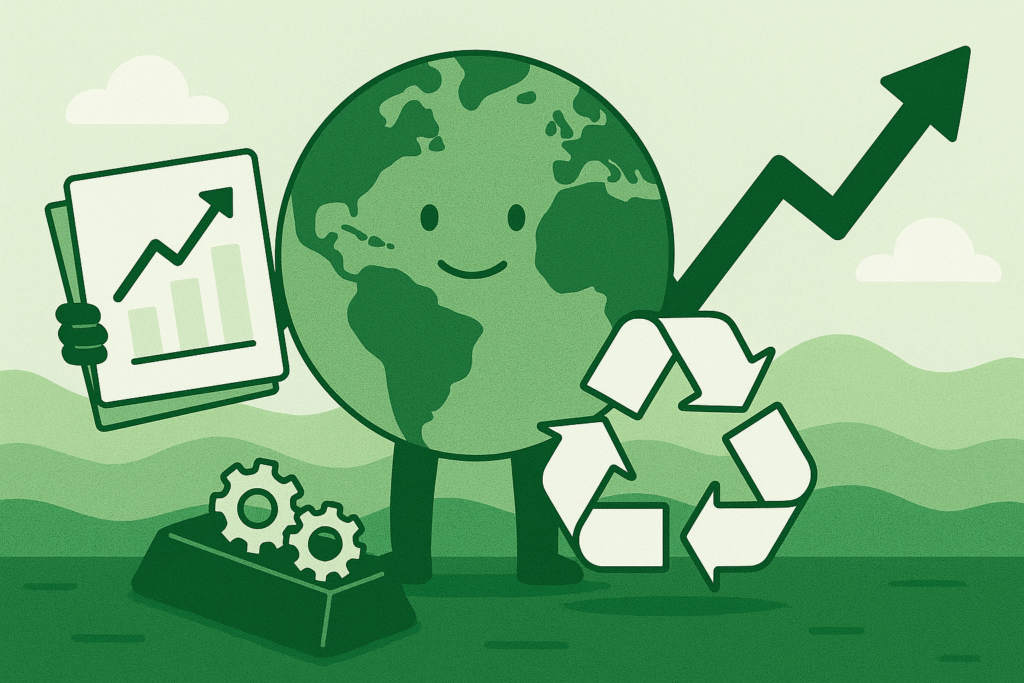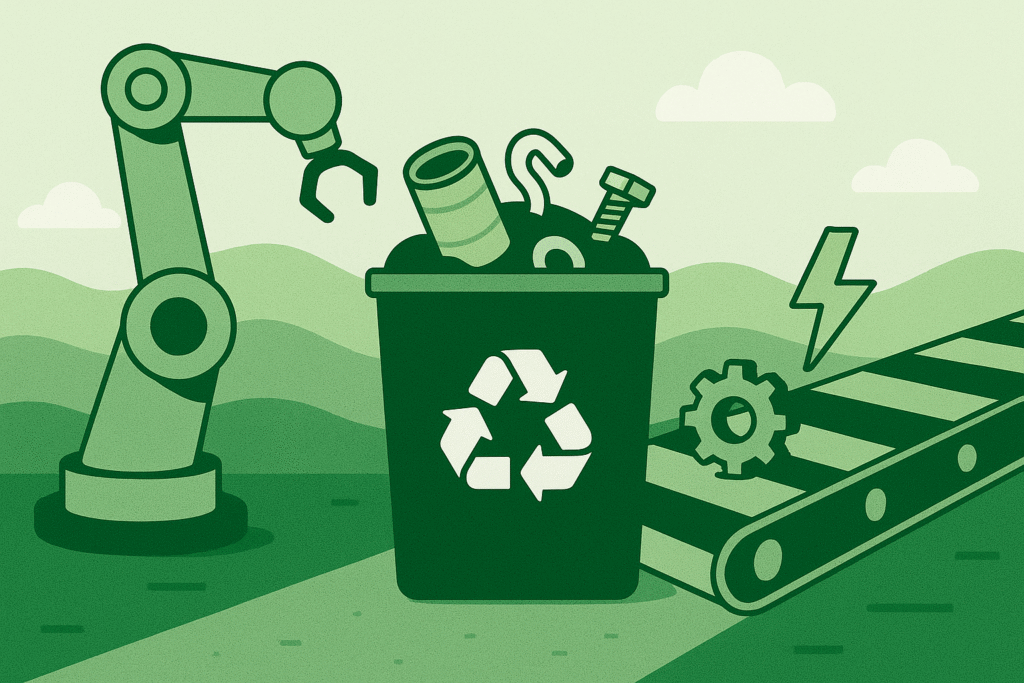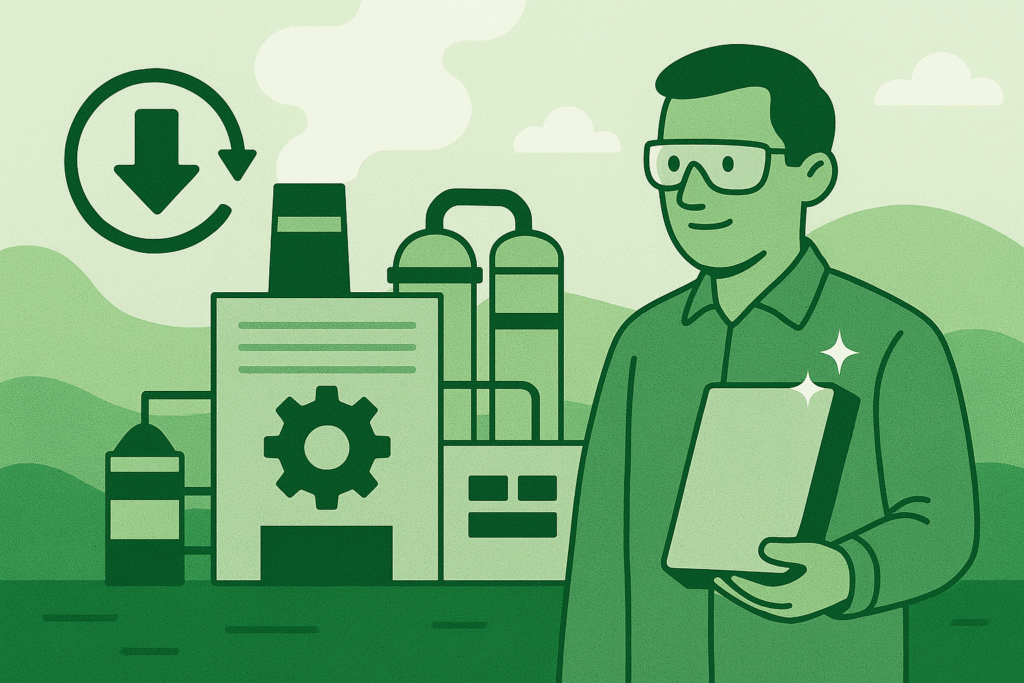The global demand for recycled metals is surging as industries seek more sustainable and secure sources of critical materials. From common base metals to niche elements, recycling has moved into the spotlight as a key strategy to meet material needs. This trend is driven by a confluence of factors – from geopolitical supply risks to environmental mandates – and is increasingly impacting not only bulk commodities but also precious metals and specialized elements like rubidium, palladium, rhodium, platinum, and cesium. Major economies are responding with ambitious targets: for example, the European Union’s new Critical Raw Materials Act aims to source 25% of its strategic raw material needs from recycling by 2030. Globally, the metal recycling market was valued around $253 billion in 2024 and is projected to reach $356 billion by 2033 (about 4% annual growth), underscoring how recycling is becoming an essential pillar of metal supply chains worldwide.
Drivers of the Growing Demand for Recycled Metals
Several key drivers are propelling the increased demand for recycled metals across industries:
- Supply Chain Resilience: Heightened geopolitical and supply risks are pushing companies to secure alternative metal sources. Many critical metals are produced in only a few countries, making supply chains vulnerable. For instance, the United States is 100% import-reliant for cesium and rubidium with no domestic mining. Likewise, Russia historically accounted for about 25–30% of global palladium supply, so recent geopolitical tensions sent palladium prices to all-time highs (over $3,400/oz in 2022) amid fears of disrupted supply. These examples illustrate why manufacturers are turning to recycled material streams to buffer against export restrictions, conflicts, and other supply shocks.
- Regulatory Pressure and Policy: Governments worldwide are encouraging or mandating greater recycling to ensure resource security and environmental protection. The EU’s Critical Raw Materials Act, for example, sets a target to obtain 25% of strategic raw materials from recycling by 2030. It also aims to reduce over-reliance on any single country (no more than 65% of imports from one source for key materials). Similarly, many countries have implemented stricter e-waste recycling laws, recycling content requirements, and incentives for using secondary raw materials. These policies create a strong impetus for industries to adopt recycled metals to remain compliant and competitive.
- Sustainability and Climate Goals: Using recycled metals significantly reduces environmental impact compared to mining virgin ore. Recycling generally consumes less energy and water and produces fewer emissions. As one industry analysis notes, recycling is less energy- and carbon-intensive, and far faster and cheaper to scale up, than developing new mines. Companies with sustainability goals (and their investors) are prioritizing recycled inputs to lower their carbon footprint and support the circular economy. Recycled metals help cut industrial carbon emissions by avoiding the most polluting aspects of mining and refining, thus contributing to corporate ESG targets and global climate commitments.
- Economic Incentives: Economics are increasingly in favor of recycling. Many metals have high and volatile prices, so recovering them from scrap can be financially attractive. Precious metals like palladium, platinum, and rhodium are so valuable that recovering them from used products (e.g. automotive catalysts, electronics) yields significant cost savings. When palladium spiked to record prices in recent years and rhodium exceeded $20,000 per ounce in 2021, it became clear that scrapping old devices for these metals is a lucrative business. Even for less-valuable bulk metals, recycled feedstock can be cheaper than primary material, especially when factoring in costs of waste disposal or carbon pricing. In short, recycling turns waste into profit while also stabilizing supply and price over the long term.
Global Trends and Market Outlook in Metal Recycling
Worldwide, the metal recycling sector is experiencing robust growth and rapid evolution. Recycled metals now constitute a growing share of raw material supply in construction, automotive, electronics, and other major industries. For example, the steel industry’s shift toward electric arc furnaces (which primarily use scrap) reflects a broad trend of replacing ore with recycled metal for efficiency and environmental reasons. Construction and infrastructure projects are increasingly sourcing recycled steel, aluminum, and copper, driven by both cost and green building standards. S&P Global estimates global construction spending will reach $15.7 trillion in 2025, fueling greater metals consumption – a need that recycling is poised to help meet. Recycled metals are viewed as an “environmentally responsible alternative” to primary materials, reinforced by regulations and sustainability objectives encouraging their use.
Geographically, Asia-Pacific leads the world in metal recycling volume, thanks to rapid industrialization and proactive policies. China’s massive manufacturing base generates and consumes enormous quantities of scrap metal, making it a key driver of recycled metal demand. In Europe, stringent circular economy policies and advanced recycling infrastructure have expanded the recycled metals market, especially in countries like Germany and the UK. North America’s recycling industry is also growing as environmental awareness and green procurement rise among businesses. At the same time, there is vast untapped potential: in the EU, for instance, the average end-of-life recycling input rate for critical raw materials is only ~8.3%, indicating significant room for growth as new recycling programs come online.
Global market statistics mirror these trends. The global metal recycling market is projected to grow from $253 billion in 2024 to roughly $356 billion by 2033. Analysts attribute this growth to technological improvements in recycling, higher scrap collection rates, and stronger collaboration between manufacturers and recyclers to ensure supply. There is also enormous economic value locked in society’s “urban mines” (end-of-life products and industrial scrap). One recent report estimated that over $110 billion worth of critical materials could be recovered from secondary sources like e-waste, spent batteries, and scrap vehicles. This underscores how recycling is not just a waste management practice, but a major mining opportunity of its own. As recycling systems become more efficient and widespread, we can expect secondary supply to play an ever larger role in global metal markets.
Precious Metals: Palladium, Platinum, and Rhodium
Recycling has long been important in the realm of precious metals, and today it is absolutely critical. Palladium, platinum, and rhodium – key platinum-group metals (PGMs) – are indispensable in catalytic converters for automobiles, as well as in electronics and chemical catalysts. They are also extremely scarce and expensive to obtain from mining. Primary PGM production is concentrated in a few regions (South Africa and Russia together account for the majority of the world’s mined supply), which poses supply security issues. In recent years, power supply problems in South Africa and geopolitical conflict affecting Russian exports have tightened PGM supplies. As a result, recycling has become a lifeline to meet demand for these metals.
The auto industry provides a powerful example: when vehicles are scrapped, their catalytic converters are collected and refined to reclaim PGMs. This “urban mining” of auto catalysts has grown into a sophisticated global recycling network. In 2023, an estimated 120,000 kilograms of palladium and platinum were recovered worldwide from old scrap (mostly from spent catalysts) – a volume equivalent to roughly one-third of the combined newly mined supply of those metals for that year. This secondary supply significantly reduces the need for virgin mining and helps satisfy the autocatalyst sector’s requirements. Even so, PGM markets remain tight. Industry reports for 2024 project that demand for platinum, palladium, and rhodium will continue to outstrip supply despite record recycling levels. In other words, without recycling, the deficits in these markets would be even more severe.
Recycling PGMs is also economically compelling. The high unit value of these metals justifies advanced recovery processes – it’s worthwhile to extract every last gram from electronic waste and catalyst scrap. For example, specialized recycling facilities can recover over 90% of the palladium, platinum, and rhodium from used catalytic converters, which is then fed back into the supply chain for new vehicles. This not only eases supply risks but also reduces the environmental impact: producing an ounce of platinum from recycled material has a much smaller carbon footprint and energy requirement than mining and refining an ounce from ore. With emerging applications like fuel cell catalysts and hydrogen production potentially increasing future platinum demand, robust recycling will be even more essential to balance the market. In short, for precious metals, recycling is now a primary source of supply – one that industry partners cannot afford to ignore given the combination of regulatory pressures on end-of-life vehicle recycling and the persistent economic incentives to reclaim these valuable elements.
Niche Critical Metals: Rubidium and Cesium
Rubidium and cesium are lesser-known metals, but they exemplify why recycling is extending to even the most niche materials. These alkali metals are considered critical due to their specialized uses and vulnerable supply chains. Rubidium and cesium are used in high-tech and industrial applications ranging from atomic clocks and GPS units, to specialty glasses and drilling fluids, to biomedical devices. For instance, cesium formate brine is a high-density fluid used in oil & gas drilling, and rubidium carbonate is used in fiber-optic telecom glass and electronics manufacturing. Both elements are also important in cutting-edge research: cesium and rubidium are integral to atomic clocks and emerging quantum technologies, where their unique chemical properties enable advanced performance.
Demand for these niche metals is relatively small in tonnage but growing steadily, and supply is extremely constrained. Rubidium and cesium are not mined in large quantities in most of the world – in fact, recent U.S. reports noted no mine production at all in 2024 for either element, apart from possible small output in China. Historically, the only significant cesium mine (in Manitoba, Canada) and a few rubidium-yielding pegmatite mines (in Africa and Australia) have all closed or been depleted in the last two decades. This leaves a situation where China is believed to be the primary source of new cesium and rubidium, and the U.S. remains 100% import-dependent for both. Governments have flagged these elements as strategic – indeed, rubidium, platinum, palladium, and rhodium all appear on the U.S. critical minerals list due to their economic importance and supply risk. The world’s remaining stockpiles of rubidium (outside of China) could be depleted in the near future at current consumption rates, which is alarming when considering any surge in demand (for example, wider adoption of rubidium in quantum computing or medical diagnostics).
In this context, recycling and re-use of cesium and rubidium-bearing materials becomes vital. Although these metals are used in smaller volumes, their applications often allow for recovery and recycling. A prime example is cesium formate brine in oil drilling, which is so valuable that it is typically rented and reclaimed after use – about 85% of used cesium brine is recovered and recycled for future drilling operations. This closed-loop approach in the oil industry ensures minimal wastage of cesium because losing it would be economically prohibitive. For rubidium, opportunities for recycling are more nascent, as many uses (like R&D or electronics) consume the metal in dispersed ways. However, as rubidium finds broader use (such as in telecom networks or potential large-scale quantum devices), we can expect recycling initiatives to develop. For instance, any process that concentrates rubidium (like certain chemical catalysts or glass polishing waste) could be targeted for recovery. Moreover, rubidium often occurs alongside lithium or cesium in mineral deposits, so future lithium extraction projects are exploring ways to extract rubidium and cesium byproducts, effectively “recycling” these elements from what would have been mining waste.
The push for recycling niche critical metals is also reinforced by sustainability and safety considerations. Cesium-137 (a radioactive isotope) is a byproduct of nuclear fission and has to be carefully managed; while not a commercial source of cesium for industry, its existence in waste streams highlights the importance of safe recovery and disposal programs (for example, replacing and recycling old cesium radiological devices). All these efforts underscore that no metal is too minor to recycle if it plays an irreplaceable role in technology and if primary supplies are at risk. As industry awareness grows, we are likely to see rubidium and cesium recycling move from a niche consideration to a standard practice for companies that rely on these materials.
Conclusion: From Environmental Choice to Economic Imperative
What began primarily as an environmental initiative – metal recycling – has evolved into an economic and strategic imperative on a global scale. Market dynamics and policy signals all point to recycled metals becoming an essential component of industrial supply chains. In today’s world, recycling is not merely about reducing waste; it is about building a resilient and sustainable materials ecosystem. Companies that embrace recycled metal sourcing gain more control over their supply, shield themselves from volatile commodity markets, and often enjoy cost advantages, all while meeting regulatory and environmental obligations.
The growing demand for recycled metals is a clear reflection of this new reality. Whether it’s a steel mill using scrap to cut energy costs, an automotive manufacturer recovering precious PGMs from end-of-life vehicles, or a technology firm looking to secure critical minerals like cesium and rubidium for future applications – industries are increasingly viewing recycling as both environmentally responsible and economically essential. As one analysis succinctly put it, recycling enables regional self-sufficiency, reduces dependence on geopolitically concentrated sources, and can be expanded faster and with less capital than developing new mines. In practical terms, this means recycled metals are becoming a strategic asset.For potential industry partners, the implication is clear: engaging in the recycled metals market is no longer optional if you aim to future-proof your operations. Partnerships in recycling programs, investment in recycling technologies, and commitments to use secondary metals can all yield dividends in stability and sustainability. By working together across the value chain – miners, manufacturers, recyclers, and end-users – we can ensure that critical and precious metals are efficiently recycled and remain in circulation. This not only supports global sustainability goals but also strengthens the supply networks that underpin modern industry. In sum, the rise in recycled metal demand is a positive feedback loop: it makes both environmental and business sense to reclaim and reuse metals, and this realization is fueling a transformative shift in how the world sources its metal needs. Embracing this shift will be key to thriving in the era of circular economies and resource security.



